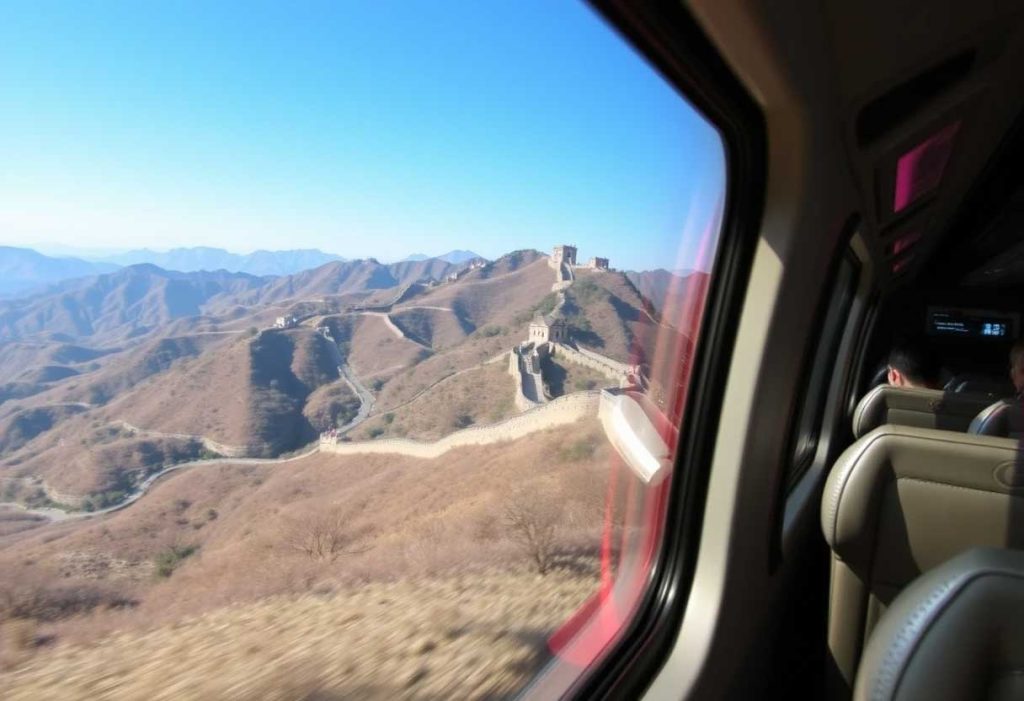Visiting the Great Wall of China is a highlight for any traveler to Beijing. Located just outside the city, the Wall is accessible via multiple transportation options that cater to a wide range of preferences and budgets. Whether you’re looking for a quick day trip, an immersive multi-day adventure, or a private and luxurious experience, understanding the transportation choices available is key to planning a seamless journey.
One of the most popular ways to reach the Great Wall is by public bus. This option is both economical and relatively straightforward for independent travelers. For sections like Badaling, buses depart regularly from downtown Beijing, such as at Deshengmen Bus Station, with the journey taking approximately 1.5 to 2 hours depending on traffic. Mutianyu, another popular section, is also accessible by bus, but often requires a transfer or the use of dedicated tourist buses. While public buses are cost-effective and widely used by locals, they can be crowded, especially during weekends and holidays, so arriving early at the station is advisable. Additionally, most signage and announcements are in Chinese, which may pose challenges for non-Mandarin speakers. A good travel guide or translation app can help navigate this experience smoothly.
For those seeking convenience and comfort, private tours and shuttle buses are excellent alternatives. Many tour operators in Beijing offer packages that include round-trip transportation, admission tickets, and sometimes even meals or guided tours. These shuttles often depart from major hotels or tourist hubs, making them a hassle-free choice for first-time visitors or families with young children. Unlike public buses, private shuttles are more spacious and direct, often dropping passengers off closer to the Wall’s entrances. Tours can also include additional amenities, such as air conditioning, English-speaking guides, and flexibility in departure times. While slightly more expensive than public buses, the added comfort and ease make them a popular choice for international travelers.
For a truly personalized experience, hiring a private car or taxi is an ideal option. This method provides the ultimate flexibility in terms of schedule and destinations, allowing visitors to explore multiple sections of the Wall or other nearby attractions in a single day. Private cars can be arranged through travel agencies, hotel concierge services, or ride-hailing apps like Didi, which is widely used in China. Taxis are also available, though it is important to negotiate the fare in advance or ensure the driver uses a meter. The cost of hiring a private car or taxi varies depending on the distance and duration of the trip but typically ranges from ¥600 to ¥1,000 for a full day. This option is particularly convenient for exploring remote sections of the Wall, such as Jiankou or Gubeikou, which are less accessible by public transport.
Train travel is another increasingly popular way to reach the Great Wall, especially for those visiting Badaling. The Beijing-Zhangjiakou high-speed railway offers a fast and efficient connection, reducing travel time to just 30 minutes. Trains depart from Beijing North Railway Station and arrive at the Badaling Great Wall Station, which is conveniently located near the Wall’s entrance. The high-speed train is modern, clean, and reliable, making it an excellent choice for travelers who value speed and comfort. Tickets can be purchased online, through apps, or at the station, though it’s advisable to book in advance during peak travel seasons to secure your preferred departure time.
For a more adventurous approach, cycling to the Great Wall is an option for experienced cyclists and outdoor enthusiasts. This mode of transport provides an intimate way to experience the countryside surrounding Beijing and offers the freedom to explore off-the-beaten-path areas. The journey, however, is physically demanding and requires careful planning, including mapping the route, understanding local traffic regulations, and ensuring you have the appropriate gear. Popular cycling routes often lead to quieter sections of the Wall, such as Huanghuacheng or Jiankou, offering unique and rewarding experiences for those up to the challenge.
Once you have chosen your preferred mode of transport, it’s essential to consider a few practical tips to ensure a smooth trip. Start by planning your visit during weekdays if possible, as weekends and public holidays can bring significant crowds to popular sections of the Wall. Always check the weather forecast and dress appropriately for the season, as the conditions can vary greatly depending on the time of year. Additionally, bring cash, as some transportation options and rural areas may not accept credit cards or digital payments. Finally, prepare for the physical demands of walking along the Wall by wearing comfortable shoes and carrying water and snacks.
Each transportation option offers a unique way to experience the Great Wall, and the best choice ultimately depends on your travel style, budget, and the specific section of the Wall you wish to explore. Whether you prefer the affordability of public buses, the convenience of private tours, the speed of high-speed trains, or the flexibility of private cars, there is a solution to suit every traveler. With careful planning and an understanding of the available options, your journey from Beijing to the Great Wall is sure to be an unforgettable adventure.


